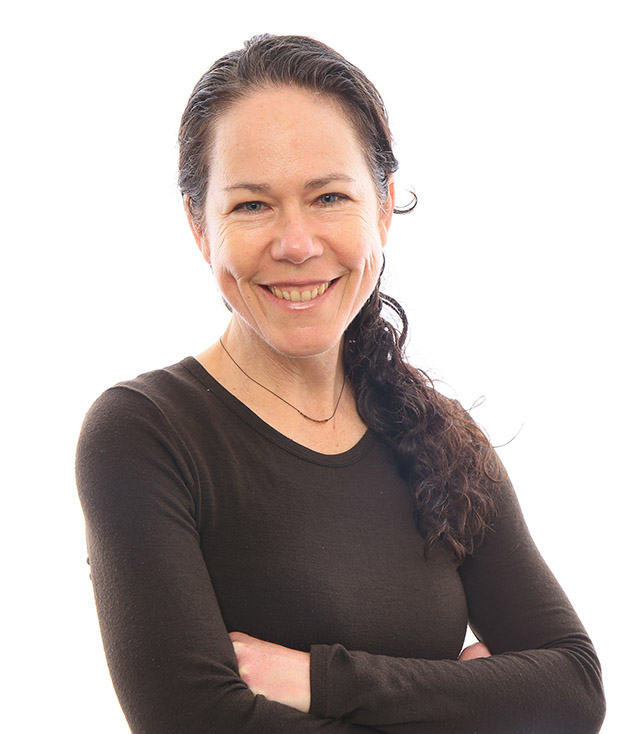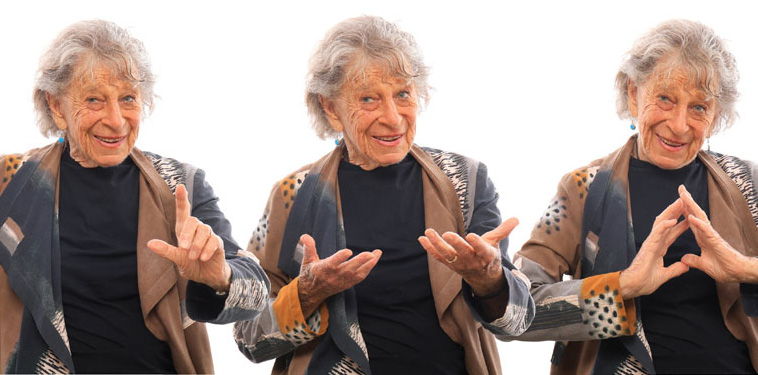Anna Halprin, a longtime Marin County, California resident, and alumna of New Trier High School in Winnetka, Illinois, also happens to be a postmodern dance legend — no exaggeration. Creator, cancer survivor, author, and experimental dancer, Halprin has taught dance to thousands of people for roughly 80 years.
Anna Halprin teaches in both her Kentfield studio and through her Tamalpa Institute in San Rafael, and her innovative Planetary Dance is performed in almost 40 countries around the world. She is a pioneer of postmodern dance, and heavily influenced New York’s Judson Dance Theater, a foundational company in the postmodern dance world. She collaborated with countless influential artists, from musicians such as Morton Subotnick and Luciano Berio, and taught artists such as Meredith Monk and Carrie Mae Weems. Over her long career, Halprin has created more than 150 dance theater works and written three books.
A 2009 documentary, “Breath Made Visible,” examines her life, work, and views on dance’s transformative power, as does Andy Abrahams Wilson’s award-winning “Returning Home.” The Dance Heritage Coalition has named her one of “America’s irreplaceable dance treasures,” and her many honors include the Doris Duke Impact Award and Isadora Duncan Dance Award in 2014. Halprin’s work has displayed as a solo art exhibition at both the Lyon Museum of Contemporary Art and San Francisco’s Yerba Buena Center for the Arts, as well as shows on performance art at MoMA PS1, Centre Pompidou, and ZKM Museum. The Museum of Performance & Design in San Francisco houses the Anna Halprin Digital Archive. Halprin was also in the first group of New Trier High School Alumni Hall of Honor inductees — a school with a long list of famous students.
With a spirit fueled by community, inspiration, and a deep love of her art, she shows no signs of hanging up her dance shoes any time soon.
What is your style of dance?
My work has never fit easily into categories of “modern” or “postmodern” or even “contemporary” dance. What interests me is an art that is connected to life, where the social, political, spiritual, and aesthetic threads are all interwoven in a real way. My approach is based on somatics — the science of how the body works — so one learns more of a natural form of movement.
Why is dance so powerful for you?
Dance has the power to teach, inspire, heal, and transform. I’m committed to probing the nature of dance and exploring its impact. It’s exciting to share my love of dance with diverse people, from children to seniors, and in turn, be inspired — as happens every Wednesday with my performance lab. When I was stricken with cancer in my early ’50s, I discovered the healing potential of dance and shared this with others facing cancer and AIDS.
What inspired you to use dance as a healing tool for those affected by illness?
Getting cancer was enlightenment at gunpoint, pushing me to rethink my relationship to dance and explore its connection to healing. Before the illness, I used my life to create art, but afterward, I used my art to have an impact on life. My book “Returning to Health” details how I have used “psychokinetic visualization,” combining dance and drawing in a healing process that grew out of my own experience.
What was a favorite dance performance you created and why?
It’s hard for me to choose just one performance. My upcoming book, “Making Dances That Matter,” focuses on two dances that have been particularly important to me: Circle the Earth, about my work with AIDS patients, and the Planetary Dance. What interests me is a process for community creativity that my husband [Lawrence Halprin] and I developed, called the RSVP cycles.
What is the annual all-day Planetary Dance event?
What makes this dance special is not just that all ages and abilities can participate in it. The Planetary Dance is danced for a purpose. You do not dance for yourself; you dance for others, for the community as a whole, with the aim of bringing about social change. Moving to a steady musical beat, participants run or walk in a circular pattern. Each step becomes a call for peace.
Did you love to dance as a child?
I remember at age 5 watching my grandfather praying at shul [synagogue]. He would jump up and down with great energy and joy, throwing his arms into the air as if he were possessed by some higher spirit. With his white hair and long beard he looked like God to me, so I thought God must be a dancer. This experience inspired me to spend my life looking for a dance that would mean as much to me and others as my grandfather’s dance meant to him.
Any other important influences?
The creativity of my husband, the landscape architect Lawrence Halprin, has been a major influence, as has my teacher Margaret H’Doubler at the University of Wisconsin, who offered a kinesthetic approach to movement that wasn’t based on imitating someone else’s personal [dance] style. For years, I have also learned from the Pomo community, who allowed me to participate in their dances.
Where in Marin inspires and recharges you?
My outdoor dance deck, designed by my husband. It sits in the midst of a redwood forest and is open to the sky. We see birds flying above and sometimes deer walking the paths.
This article originally appeared in Marin Magazine.
 Kier Holmes is a Bay Area-based freelance writer and landscape designer who contributes to Marin Magazine, Sunset Magazine, and Gardenista, combining her devotion to plants and to writing. Kier is also a garden educator at the Mill Valley Public Library in Marin, where she nurtures children’s innate curiosity of all living things through nature crafts and books. When not gardening, writing, or teaching, you can find her at Stinson Beach hunting for shells or picking up ocean debris with her 12-year-old son. Follow her on Instagram.
Kier Holmes is a Bay Area-based freelance writer and landscape designer who contributes to Marin Magazine, Sunset Magazine, and Gardenista, combining her devotion to plants and to writing. Kier is also a garden educator at the Mill Valley Public Library in Marin, where she nurtures children’s innate curiosity of all living things through nature crafts and books. When not gardening, writing, or teaching, you can find her at Stinson Beach hunting for shells or picking up ocean debris with her 12-year-old son. Follow her on Instagram.

